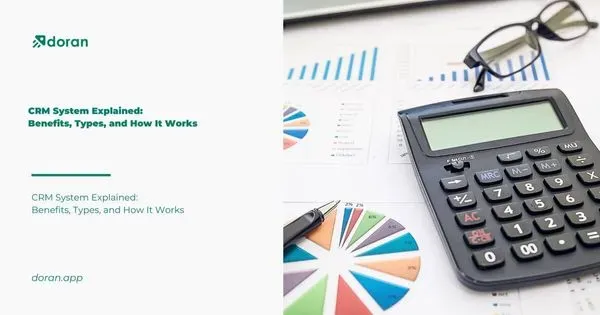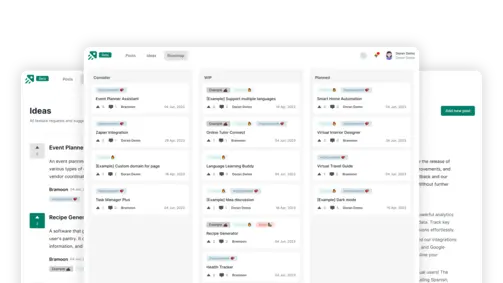Tracking Success: Guide on Creating a Quality Roadmap
Create changelog and product roadmap for your product
Explore nowTable of contents 7 min
In the fast-paced and ever-evolving business landscape, a roadmap is not just a plan, it’s a guiding document that charts the course for success. Whether you’re launching a new project, steering a company through growth, or aiming to enhance your personal development, a quality roadmap is your strategic ally. In this comprehensive guide, we’ll explore the key steps and principles of creating a quality roadmap that serves as a reliable blueprint for achieving your goals.
Define your Purpose and Objectives

The first step in creating a quality roadmap is clearly defining your purpose and objectives. What is the main objective you want to accomplish? Whether it’s launching a product, improving organizational efficiency, or personal development milestones, a well-defined purpose provides the foundation for your roadmap.
SMART Objectives
Using the SMART framework, you can set specific, measurable, achievable, relevant, and time-bound objectives. This approach helps you clearly define what you want to achieve, establish clear metrics for tracking progress, ensure that your goals are realistic and within reach, ensure they align with your overall objectives and priorities, and set a deadline for completion. By following this framework, you can increase the likelihood of successfully achieving your goals.
Prioritization
By prioritizing objectives based on their significance and impact, you can ensure that your roadmap is tailored to address the most crucial aspects of your project or strategy. This approach allows you to allocate resources and efforts efficiently, ultimately increasing the chances of success in achieving your goals. Additionally, it helps in maintaining clarity and direction throughout the implementation process.
Conduct a Thorough Assessment

Before plotting your route, it’s crucial to thoroughly assess your current situation. This involves analyzing your strengths, weaknesses, opportunities, and threats (SWOT analysis).
Strengths
By identifying your strengths, you can clearly understand what sets you apart from others in your field. These strengths could include specialized skills, access to valuable resources, or a unique competitive advantage that gives you an edge over your competitors. By leveraging these strengths effectively, you can maximize your chances of achieving your objectives and stand out in the market. In an ever-changing business environment, never forget to evaluate and improve your abilities.
Weaknesses
To acknowledge weaknesses and areas that require improvement, it is important to conduct a thorough self-assessment and seek feedback from others. This will help identify specific areas that need attention. Once these weaknesses are identified, developing a plan of action to address them is crucial. This may involve seeking additional training or education, finding a mentor or coach, or setting specific goals and timelines for improvement. It is crucial to conduct periodic assessments of development and make necessary modifications to guarantee ongoing growth and advancement.
Opportunities
It is feasible to remain ahead of the competition by modifying your business plans in response to emerging opportunities in the market or sector. Identify unexplored markets, developing trends, and consumer demands by doing in-depth market research and analysis. Make sure your quality roadmap takes these findings into account to guarantee long-term success and sustained growth.
Threats
By identifying potential threats or challenges, you can proactively address them and minimize their impact on your progress. It is important to regularly reassess and update your contingency plans as new risks arise or existing ones evolve. This proactive approach will help ensure the smooth execution of your roadmap and enable you to overcome any obstacles that may come your way.
Read more: Decoding Success: a Deep Dive into Strategy Roadmap Examples
Stakeholder Engagement

In any endeavor, the involvement and support of stakeholders are crucial. This includes team members, partners, customers, or any other individuals or groups affected by your roadmap.
Identify Key Stakeholders
Determine who the key stakeholders are and understand their expectations, concerns, and contributions. This information will help you tailor your roadmap to align with stakeholder interests.
Communication Plan
Establish a clear and effective communication plan to inform stakeholders about the roadmap’s progress, changes, and milestones. Regular updates foster transparency and trust.
Break down your Goals into Milestones

Divide your overarching objectives into smaller, manageable milestones. This makes the journey more digestible and allows for better tracking and measurement of progress. Clearly define what each milestone represents and how it contributes to the overall objective. This provides a roadmap within the roadmap, helping you stay on track.
Assign realistic timelines to each milestone. This prevents a sense of overwhelm and ensures that you have a clear schedule for achieving each step.
Resource Planning

Effective resource planning is a critical aspect of any quality roadmap. Resources include finances, human capital, technology, and any other assets required for success.
Budget Allocation
Effectively allocating budget in a roadmap is about setting clear priorities, assessing resources, and creating a realistic budget. Prioritize high-impact projects, consider their cost-benefit, and keep a portion for risk management. It is essential to provide a comprehensive breakdown of the budget required for each phase of the roadmap, encompassing not only financial resources but also the allocation of time and energy. This will enable stakeholders to understand the holistic investment needed for successful implementation and ensure effective planning and resource management throughout the project. Additionally, highlighting the non-monetary aspects of the budget emphasizes the importance of considering time constraints and human effort, enabling better decision-making and realistic expectations.
Team Roles and Responsibilities
Clearly state each team member’s duties and responsibilities with regard to the quality roadmap. This encourages responsibility and guarantees that each person is aware of their role in achieving the main objective.
Find out more: Navigating Data Success: Crafting Roadmap for Business Intelligence
Flexibility and Adaptability

While a roadmap provides a structured plan, it’s essential to recognize that unforeseen circumstances may arise. Build flexibility and adaptability into your roadmap to accommodate changes without compromising your overall objectives.
Contingency Plans
Develop contingency plans for potential roadblocks or unexpected challenges. Having predefined solutions will enable you to navigate disruptions more effectively.
Regular Review and Adjustment
Plan frequent assessments of your quality roadmap to evaluate its progress and pinpoint any areas that could need modification. You may remain on course and adjust to changing circumstances by taking a proactive attitude.
Emphasize Continuous Improvement

A quality roadmap is not a static document; it’s a dynamic tool for continuous improvement. Encourage a culture of learning and refinement within your team or organization.
Feedback Mechanisms
Establish mechanisms for collecting feedback from stakeholders and team members. Valuable insights can be gained from those on the front lines of implementation.
Data-Driven Decision-Making
Utilize data and analytics to inform decision-making. Analyzing key performance indicators (KPIs) provides objective insights into what’s working and what needs improvement.
Iterative Refinement
Be open to revisiting and refining your roadmap based on feedback and data. Iteration is key to ensuring that your roadmap remains relevant and effective.
Creating a quality roadmap is a holistic process that involves careful planning, strategic thinking, and adaptability. Whether you’re leading a team, managing a project, or steering personal growth, a roadmap provides the clarity and direction needed for success. By defining clear objectives, conducting thorough assessments, engaging stakeholders, breaking down goals into milestones, planning resources effectively, building flexibility, and emphasizing continuous improvement, your roadmap becomes a powerful tool that not only guides your journey but propels you towards sustained success. Remember, a quality roadmap is not just about reaching the destination; it’s about the journey of growth and achievement.
What to not miss out on our blog
Gain insightful knowledge and invaluable experiences from dedicated experts.

CRM System Explained: Benefits, Types, and How It Works
Discover everything about CRM system. Learn the benefits and how a CRM system works to improve customer relationships and streamline business operations.

Are you ready? Start your free trial today.
Enhance communication, keep track of the progress, understand customers' insight and more by taking your first trial on Doran.
Sign up for free

